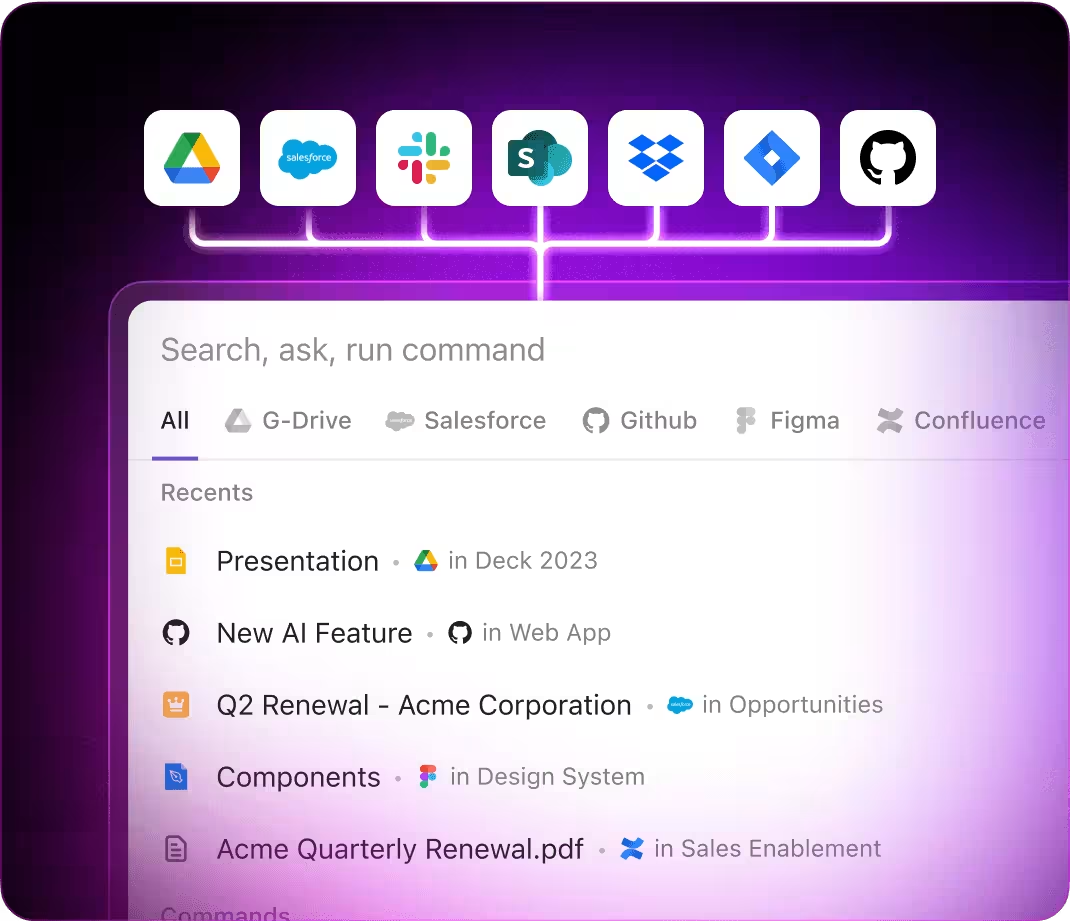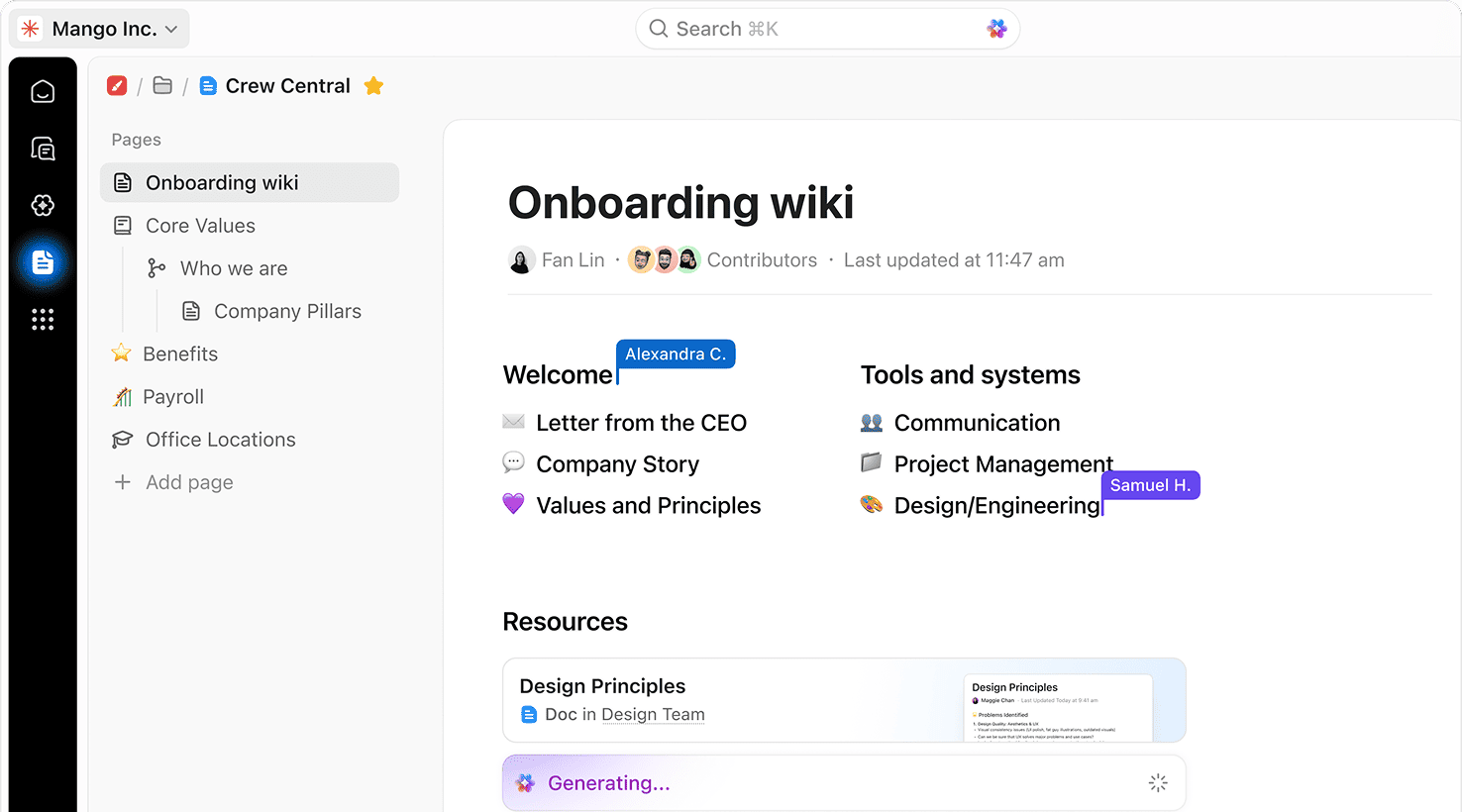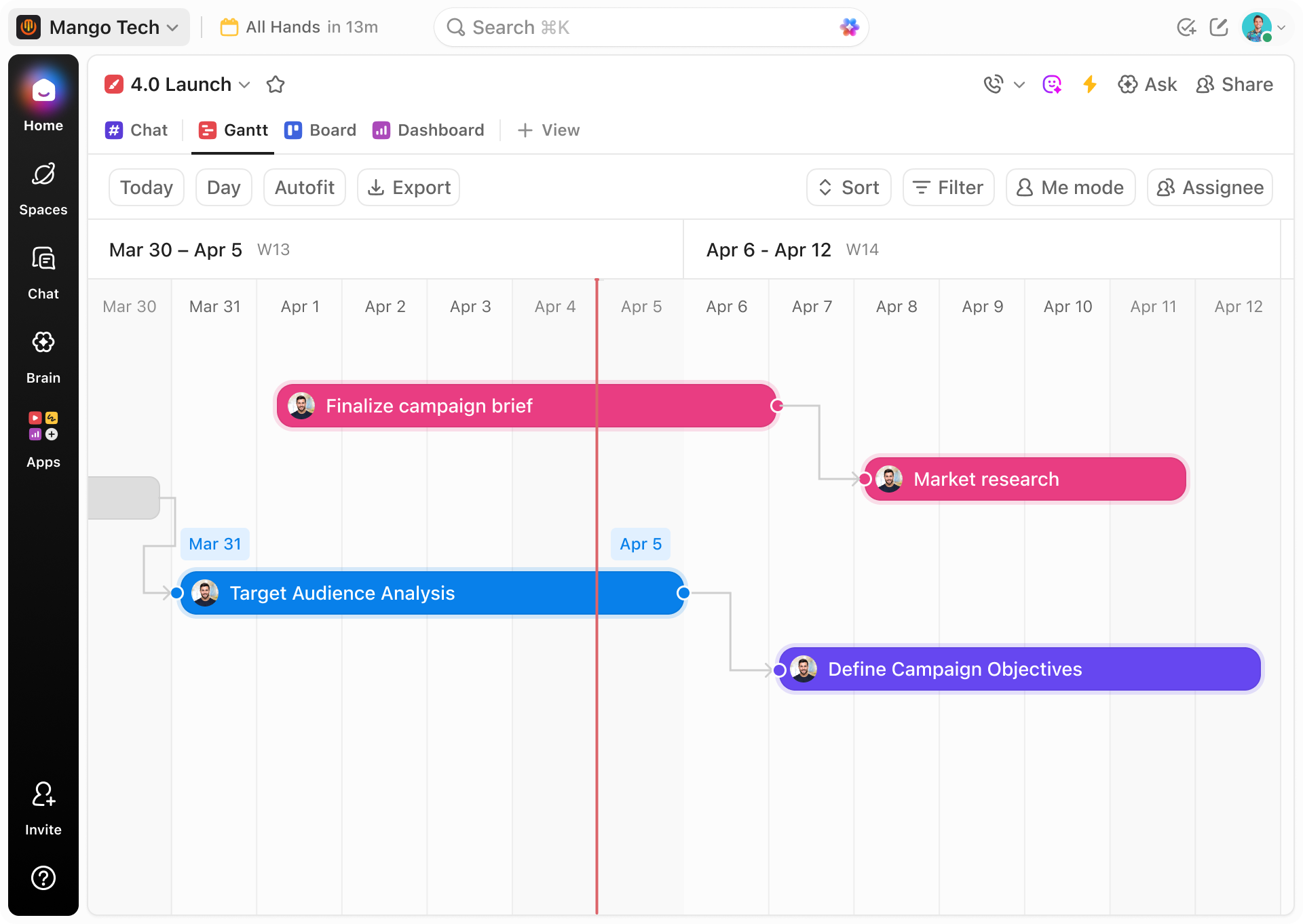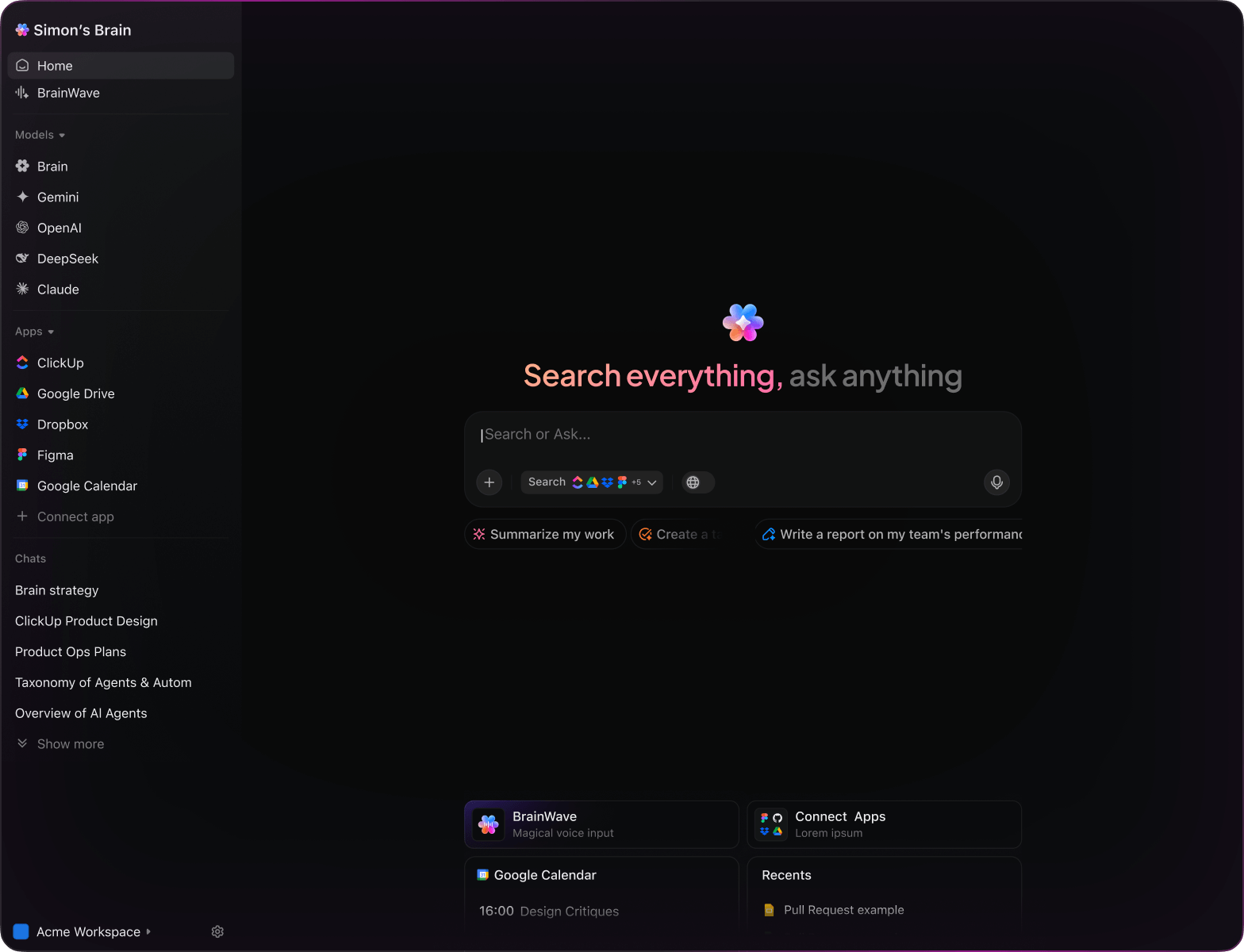AI-Powered Business Documentation
Master the AI Business Requirements Doc Generator
Uncover how AI redefines creating business requirements documents—from automating drafts to refining specs. Harness ClickUp Brain to craft precise, actionable docs effortlessly.

Trusted by the world’s leading businesses
AI in Business Documentation
Demystifying the AI Business Requirements Doc Generator
An AI Business Requirements Doc Generator automates drafting detailed, clear business requirement documents essential for project success. Traditionally, compiling these docs involved manual data gathering, back-and-forth with stakeholders, and tedious revisions.
AI revolutionizes this by interpreting natural language inputs, extracting key business needs, and structuring them into comprehensive documents rapidly.
Integrated with tools like ClickUp Brain, it not only drafts but dynamically updates your requirements as projects evolve, ensuring your documentation stays accurate and aligned with real-time work.
ClickUp Brain vs Traditional Methods
Why ClickUp Brain Transforms Business Requirement Docs
ClickUp Brain embeds AI into your workflow—making requirement drafting smarter and more connected.
Conventional Tools
- Manual compilation: Requires gathering input from diverse sources manually.
- Static documents: Often PDFs or Word files, hard to update and share.
- Fragmented feedback: Collaboration happens through emails and separate tools.
- Version confusion: Multiple document versions cause misalignment.
- Limited integration: Docs disconnected from project management platforms.
ClickUp Brain
- In-app AI drafting: Generate business requirements directly within your workspace.
- Live collaboration: Edit, comment, and iterate with stakeholders in real time.
- Dynamic syncing: Docs update automatically as project data changes.
- Centralized feedback: All discussions and approvals happen in one place.
- Brain Max capability: Customize logic to tailor documentation workflows to your business needs.
Step-by-Step Approach
How to Generate an AI-Powered Business Requirements Document
Follow these steps to create clear, actionable business requirements with AI assistance.
1. Gather Your Project Insights
Traditional approach: Manually collect stakeholder inputs, goals, and constraints from emails and meetings.
With ClickUp Brain: AI scans task descriptions, goals, and comments across your workspace to draft initial requirements reflecting current project context.
2. Use AI to Structure Requirements
Traditional approach: Manually organize requirements into sections: objectives, scope, functional specs.
With ClickUp Brain: Simply prompt the AI to format inputs into a structured, standardized document tailored to your project’s methodology.
3. Refine and Collaborate in Real Time
Traditional approach: Circulate static docs for feedback, leading to version control headaches.
With ClickUp Brain: Invite stakeholders to co-edit and comment directly on the living document, streamlining consensus and updates.
4. Maintain and Update Automatically
Traditional approach: Manually revise docs as project scope or requirements change.
With ClickUp Brain: The document stays synchronized with changes in your project workspace, automatically reflecting updates as new info emerges.
Elevate Your Documentation Process
Replace manual drafting with AI-driven, connected business requirements documentation using ClickUp Brain.






Use cases
3 Essential Use Cases for AI Business Requirements Docs
Explore how AI-generated business requirements documents empower teams across industries.
Use case 1
Accelerate Product Development Cycles
Product managers use AI-generated docs to capture clear specs quickly, align cross-functional teams, and reduce time-to-market with precise, adaptable requirements.

Use case 2
Streamline Vendor and Stakeholder Communication
Procurement and project leads leverage AI-generated requirements to ensure clarity and consistency in contracts and deliverables, minimizing misunderstandings and delays.

Use case 3
Enhance Agile Project Management
Agile teams integrate AI-powered requirement docs to keep user stories and acceptance criteria well-defined and continuously aligned with evolving priorities.

Key Features
Attributes of an Effective AI Business Requirements Doc Generator
Discover the core capabilities that distinguish top-tier AI documentation tools.
Natural Language Processing
Transforms conversational input into precise business requirements.
Real-Time Document Sync
Keeps requirements updated as project data and tasks evolve.
Workflow Integration
Connects documentation with tasks, goals, and project timelines.
Template Customization
Supports industry-specific formats and compliance standards.
Collaboration Features
Enables simultaneous editing, commenting, and approval workflows.
Advanced Logic with Brain Max
Allows custom rules and intelligent automation for complex documentation needs.
Transform Your Project Documentation
Let AI handle the details so you can focus on delivering results—business requirements made clear, concise, and connected.






FAQs